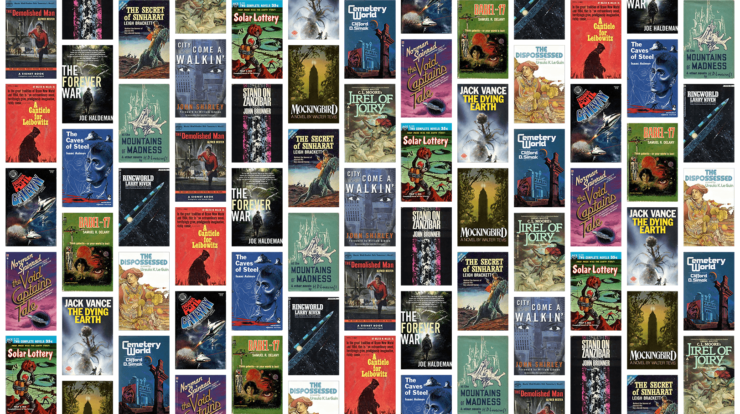This fall has been an exciting time for fans of classic science fiction, given the big-screen success of Dune and the new small-screen adaptation of Isaac Asimov’s Foundation. It’s rather fitting that Foundation had to wait 80 years following its first appearance in a pulp magazine to be adapted, and while some purists have been unhappy with the modern retelling, personally, as a lifelong fan of the novels, I thought that David Goyer and Josh Friedman made several smart choices to update the story while remaining faithful to the source material and themes.
For me, the most exciting aspect of these new adaptations was the chance to see stories come to vivid life and hear the names of characters that I’ve been thinking about for decades finally spoken aloud.
The Golden Age and the New Wave of science fiction are absolutely loaded with amazing stories and worldbuilding that fans would love to see translated to the screen (preferably with as few changes as possible). At the same time, the reality is that Hollywood is in the business of mass entertainment. Finding a balance between the two is a challenge that those shopping around a potential adaptation have to face. That is why David S. Goyer pitched Foundation as “Game of Thrones in space.” Is that reductive to the vision? Maybe, but the series got made, and as a result, we ended up with one of the best new science fiction TV shows fans have seen in some time.
So the question I asked myself is: What are the 20 best Golden Age and New Wave properties that can and should be adapted next? The resulting list is below, covering works largely published between the 1940s and the ’70s, along with discussions of how each book or series could be adapted, who should be involved, and notes on why the work continues to resonate with modern readers/potential viewers. Some of these I consider slam dunks that Hollywood should have started filming yesterday, and some are admittedly more far-fetched as potential hits…but a serious retro SF fan can dream, can’t he? Either way, what better way to find some excellent books to read or revisit…
The Caves of Steel (Asimov’s Robot Trilogy)
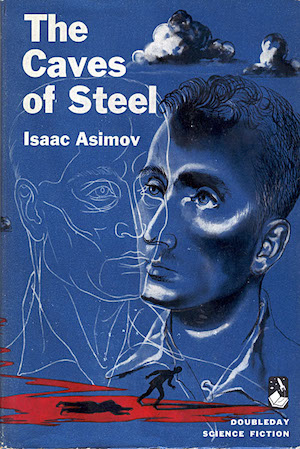
The Pitch: The Expanded Asimov universe. This one is obvious and it seems that Goyer and Friedman were already thinking along these lines, as hints to this expanded universe were made multiple times in Foundation. Since the novels extend very far into our future, the Foundation universe encompasses more than what’s covered in the AppleTV series. Asimov wrote a trilogy (and then eventually a fourth book) of robot detective noir novels that take place closer to our time but set in the same universe. The Robot Series follows robot-hating detective Elijah Bailey, who has to solve a series of murders with a robot partner, R. Daneel Olivaw. Each season would have a different look as they would take place on different worlds. These are the most commercial of all of Asimov’s properties. The first book was adapted into a single 1964 episode of BBC’s Story Parade starring Peter Cushing, but it needs a modern take to do it justice.
Don’t take my word for it: “Caves of Steel works incredibly well on two levels. It paints a compelling picture of a very plausible future for humanity. The strife over jobs, automation, prejudice, and culture, are eternally relatable. With modern FX, the New York of the novel would translate to the screen brilliantly. I can see the walkways and crowds just the way I imagined them when reading the book for the first time. On top of this vibrant location, we are treated to a classic locked room murder mystery that stands up to anything by Agatha Christie or Sir Arthur Conan Doyle. Seeing this play out over a season would be fantastic. And following the characters to other, equally rich worlds in future seasons makes this a no-brainer.” — Issa Diao, filmmaker and lead vocalist of Good Clean Fun
Format and filmmakers: This would be perfect for an Apple TV series that connects to Foundation. Each season could adapt one of the novels and eventually expand beyond the original stories. I would bring back the entire Foundation team and just let them have fun bringing Asimov’s sci-fi noir to life. Roxann Dawson is most famous for being a cast member on Star Trek: Voyager but she is an accomplished TV director (including two episodes of Foundation). Give her the pilot and let her set the tone!
Faithful or not? Written in the Fifties, the series could certainly use some updating, but essentially it would be easier to stay faithful to the stories of these novels than with Foundation.
Mockingbird by Walter Tevis

The Pitch: From the writer of The Queen’s Gambit comes the literary response to Bradbury’s Fahrenheit 451. Mockingbird is a dystopia that takes place in a future ruled by AI, where the human resistance is fueled by learning the written word. The novel is in conversation with classics like 1984 but is built on a reversal of empowering people through the power of books and literature. The high-concept, post-apocalyptic setting and narrative would make for great set pieces and visuals. Tevis, who also wrote The Hustler has a knack for rich, compelling characters and his work is ripe for adaptation. Given the recent success of Netflix’s adaptation of The Queen’s Gambit and the buzz over Showtime’s upcoming The Man Who Fell to Earth series makes this a perfect time to adapt the Nebula-nominated Mockingbird as well.
Don’t take my word for it: “Society wallows in this unbearable grief by numbing itself with sex, drugs, and electronic amusements. Until the day that literacy reignites a spark of hope and the will to remake a new future in the ruined carcass of the past. Starring a depressed robot that wants to free itself from the centuries of its core programming, a man who rediscovers the lost art of reading, and a woman who is game to imagine the possibility of a future despite the hopelessness of the state of the world, Mockingbird’s central love triangle is a bizarre and heartbreaking meditation on what humanity stands to lose as it awkwardly navigates its complex relationship with technology. While perhaps a touch quaint and conservative from today’s perspective, Mockingbird has a lot of food for thought that resonates in a 21st century tech-reliant world. It is ripe for an update” —Cecil Castellucci, author of Tin Star and We Have Always Lived on Mars
Format and Filmmakers: Limited series for Netflix with six or seven episodes to expand the concepts. A good director for the pilot would be The Cabin in the Woods and Bad Times at the El Royale director Drew Goddard. He could give the show a stylized retro-future look and handle the complex characters.
Faithful or not? The series could certainly stay faithful to the structure and themes of the novel, but the human characters and the AI’s motivations could be deepened through the expansion of the story.
Jirel of Joiry by C.L. Moore
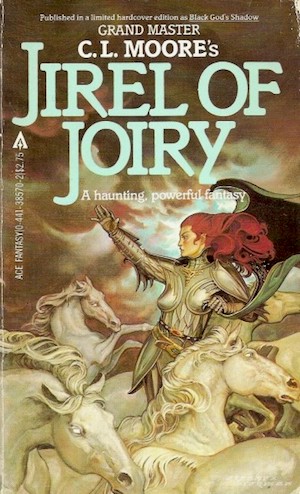
The Pitch: Jirel of Joiry is the female Conan, blazing a trail through a rich fantasy world created in the ’30s and ’40s by a woman who was herself a pioneer in the science fiction field, Catherine Lucille Moore. These stories first appeared in the pages of Weird Tales, where Robert E. Howard and H.P. Lovecraft had been cutting their professional teeth for several years, two decades before Tolkien would change fantasy forever with the publication of The Lord of the Rings. In the wake of the record amount Amazon studios paid to buy the Lord of The Rings franchise and the long-awaited Wheel of Time adaptation, why not? Unlike, say, Red Sonja, this character was created and crafted by a woman, and a studio empowering women to adapt this classic could honor the legacy of a woman who was a pioneer in the fantasy field.
Don’t take my word for it: “Making her debut years before Wonder Woman, Arwen, and Eowen, or Xena the Warrior Princess, Jirel is pop culture’s original “shero”—brave, strong, smart, stubborn, and intensely loyal to her people. Indeed, while Jirel can wield a weapon as well as any warlord, she stands out from the men of her medieval fantasy world—and, I would argue, from most action-adventure heroes—by winning the day through persistence and emotional fortitude rather than brute violence. Between her fantastic journeys to other lands, dealings with hostile gods, and internal struggles between love and duty, Jirel of Joiry feels like it was made for the screen—which makes sense, since Moore was both an award-winning genre author and regular scriptwriter for award-winning TV shows including Maverick and 77 Sunset Strip.” —Lisa Yaszek, Regents Professor of Science Fiction Studies at Georgia Tech and editor of The Future is Female
Format and Filmmakers: This character deserves a tentpole movie. Since Jirel’s image is tied to her long red hair, the no-brainer first choice for the role would be Jessica Chastain. A good choice to head the film would be Old Guard director Gina Prince-Bythewood who has shown an ability to balance the kinetic action and character beats needed in this kind of smart, blockbuster film.
Faithful or not? Jirel started life as a series of short stories. The film certainly could start with two or three stories and remain faithful. The best option is to choose one story to expand while staying true to Moore’s character and worldbuilding.
The Dispossessed by Ursula K. Le Guin
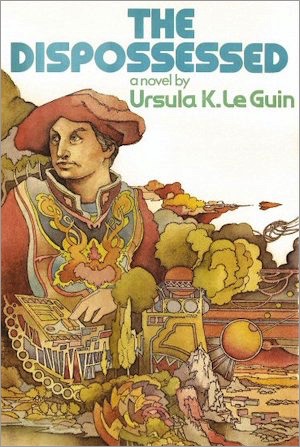
The Pitch: The Dispossessed is a science fiction utopia about political divisions by one of the great pioneers of the genre. You couldn’t ask for a timelier novel as one of the major themes highlights the rigid political distrust that keeps our society fractured. It appears that Le Guin’s son, Theo Downes-Le Guin, is currently working with two production companies—1212 Entertainment and Anonymous Content—to develop the novel into a TV show. Attracting a mass audience may be a challenge due to the political nature of the story; however, the success of a deeply politically charged show like The Expanse may help pave the way. As much as this will sting for fans of the novel, this series should be sold to studios as “House of Cards in space”…I know, I know. It’s reductive, and I am a fan of the book, but while Shevek’s great discovery as the catalyst for societal change should still be the heart of the story, I think the show must develop a clear antagonist.
Don’t take my word for it: “In The Dispossessed, Ursula Le Guin presents a fully imagined and worked-through anarchist utopia. Her world of Anarres shows how liberty and mutuality are not in opposition, and the continuing participatory work that is needed to keep utopia alive.” —Una McCormack, academic and New York Times Bestselling novelist.
Format and filmmakers: This heady project will need a little bit of room to breathe. It makes sense to do a limited series format for a streamer like Amazon or Apple TV. I would hire Hanelle Culpepper as a director who has been doing great work at Star Trek: Discovery combining effects and great, memorable moments of performance.
Faithful or not? This one will be challenging; how do you adapt a utopian work inspired by Dostoyevsky’s novel about anarchists and Murray Bookchin’s ideas on radical ecology? You can’t simply add armies and space battles to spice things up—instead, the focus on drama and political mechanics of Anarres and Urras is the key. One world’s capitalist society versus the other’s anarchist and independent society might be a tougher sell than action and explosions, but there is a way to remain faithful to Le Guin’s themes while adding more character-driven drama and friction. Thus, House of Cards in space with a clearer villain might be the way to go.
At the Mountains of Madness by H.P. Lovecraft
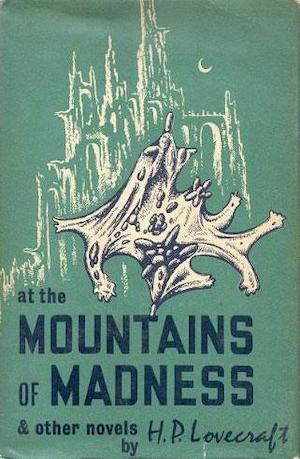
The Pitch: A genre-defining classic of Golden Age dark fantasy directed by Oscar-winning screenwriter and director Guillermo del Toro has almost happened multiple times. The movie has been designed, and even cast before. In some alternate universe, it was released and Tom Cruise starred in one of the most successful R-rated opening weekends ever. People would talk about it as del Toro’s scariest film. The problem (in our world) has always been the cost of making it. It would require a massive budget, but maybe Amazon could do one less Lord of the Rings episode and cover the costs that way… Lovecraft was, of course, a problematic figure, but he has no estate and is long dead. Let’s see what a Mexican master of film can do with this material. The pitch should be that this adaptation would do for horror what Dune did for sci-fi, and allow people to have the full theatrical, immersive cinematic experience of this world unfolding around them (assuming—hopefully—that it’s safe to do so when the movie premieres).
Don’t take my word for it: “At age 54 I’ve lived long enough to see humanity land robots on Mars, clone a sheep, and map the human genome—yet del Toro’s adaptation of H.P. Lovecraft’s At the Mountains of Madness still eludes us. And while I’m dreaming of the future, I’d also like to see Rob Zombie tackle J.F. Gonzalez’s Survivor.” —Horror Grandmaster Brian Keene, author of The Rising.
Format and filmmakers: Hollywood killed 3D by overusing it. This movie could give audiences a reason to not miss the experience. Biggest screen possible IMAX 3D.
Faithful or not? Del Toro is the right filmmaker to do the first faithful-but-updated H.P. Lovecraft movie. His screenplay has been written for years, though according to this recent interview, he’s still very interested in revising it, making it weirder, and finally bringing the story to the screen.
The Demolished Man by Alfred Bester
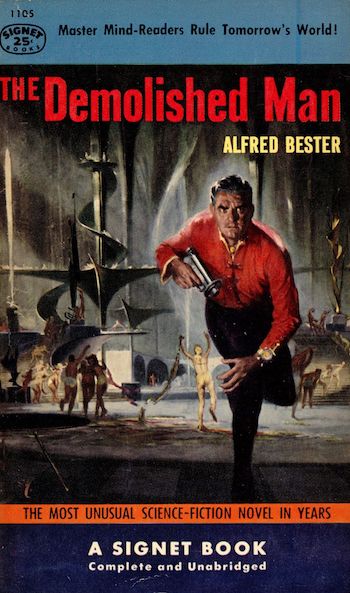
The Pitch: How does one get away with murder in a future where telepathy is commonplace? The Demolished Man is a perfect paranoid sci-fi thriller. The first novel to win the Hugo award, back in 1953, it is strange that no one has made this movie yet. It could be done creatively for a medium-sized budget (think a Looper-sized scale), heavy on ideas and characters that looks like more was spent. I would love to see a gritty noir take on this story that is as much an exploration of megalomania as it is a thriller.
Don’t take my word for it: “Alfred Bester’s work still feels modern and daring—he was doing cyberpunk-adjacent stories before cyberpunk was even a thing—and he’s long overdue for the grand Hollywood treatment. Great imagery, intriguing anti-heroes, manically dystopian worlds—his work has it all.” —Carrie Vaughn, Philip K. Dick Award-winning author of Questland and Bannerless.
Format and filmmakers: After seeing Boss Level, I am ready to give this to director Joe Carnahan. He can handle the action and effects, and his work in movies like Narc and The Grey shows that he can get strong performances out of his cast.
Faithful or not? Sure, it would need some updating, but generally it is amazing how well the book holds up.
Stand on Zanzibar by John Brunner
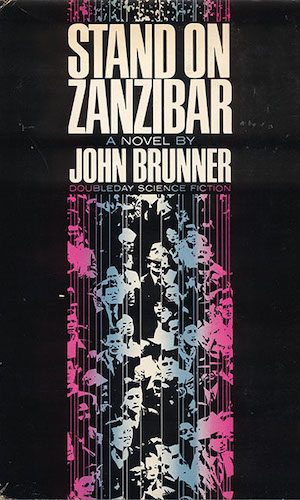
The Pitch: An epic mosaic-style look at the human impact on global ecology—although it won the Hugo in 1969, it is very much about the world of today. SoZ takes place in a future where the population and tensions are as high as resources are low. Using multiple points of view, this novel gives a varied and frightening look at the many different ways humans risk the sustainability of life on our planet. Eventually, the story comes together in a novel that predicted climate change, mass shootings, and media manipulation of the public. This is not one of the more commercial projects on the list but could be an important work. Brunner’s novel is my personal pick for the best science fiction novel of the 20th century.
Don’t take my word for it: “Groundbreaking SF using a breathtaking array of narrative techniques to paint a vividly detailed dystopian future. The fact that the population bomb never exploded as Brunner expected doesn’t diminish the power of this novel.” —F. Paul Wilson, bestselling author of The Repairman Jack series.
Format and filmmakers: This 700-page novel would need a full season to play out; I would love to see it on HBO Max. This would be excellent in the hands of the Westworld team, Lisa Joy and Jonathan Nolan, or Damon Lindelof with Nicole Kassell, who directed the pilot for Watchmen.
Faithful or not? First the environmental science and technology would need to be updated. It might also help to deepen the characters a bit. The episode structure would actually feel like the Lindelof show The Leftovers, with the mosaic approach to storytelling.
The Dying Earth by Jack Vance
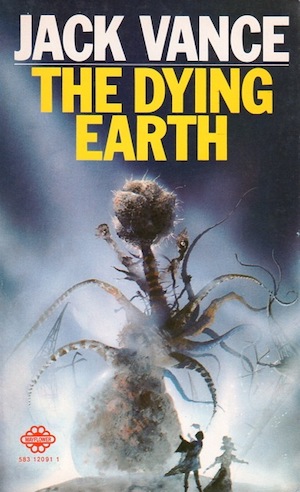
The Pitch: This is the fantasy series—one that features battles between warriors riding winged creatures, dragons, wizards, and swordplay in a far future masterpiece—that the New Wave authors grew up reading. There is a reason many old-school fans pointed to this 1950s series when they saw the flying creatures in James Cameron’s Avatar. These stories have the epic scope of Tolkien’s fantasy without the bloat.
Don’t take my word for it: “Vance cunningly blended science fiction, fantasy, and horror with this landmark collection. The Dying Earth tales possess images of darkest horror, yet his touch is so light, his cuts so deft, you won’t notice the bleeding until it’s too late.” —Laird Barron, author of Swift to Chase
Format and filmmakers: I could see a smaller streamer like Peacock picking up a project like this, in order to have their own fantasy series.
Faithful or not? Vance was a powerful storyteller. I think a showrunner would have to do some heavy lifting to get the format right, but the stories are right there for the taking.
A Canticle for Leibowitz by Walter Miller Jr.
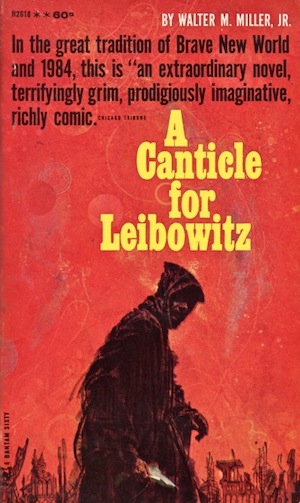
The Pitch: A beloved post-apocalyptic tale that takes place over a dozen centuries and does so while delivering a powerful message about the nature of humanity and civilization. Broken up into three acts that take place hundreds of years apart, this novel, while universally praised, has long been considered unfilmable. If each act of the movie spends 30 to 40 minutes covering each of the three parts, I think it is possible. The novel starts in the aftermath of a nuclear war and follows a sect of monks who protect the books that explain our technological society well enough that, in time, they can help to rebuild civilization. The only problem is…will we as a species make the same mistakes again?
Don’t take my word for it: “I came across it by accident, it was a book my parents were reading and talking about. I was fourteen or fifteen. I loved it then and recently re-read it, and it holds up really well. It is funny that it took the literary establishment ten years or so to catch-up to the genius the genre community saw right away. It is remarkable as a novel.” —Brian Evenson, author of Immobility
Format and filmmakers: I think this needs to be an arthouse sci-fi movie in the vein of a 2001 or Interstellar. How about getting three different A-list filmmakers for each section? Imagine part one directed by del Toro, Part 2 by Katherine Bigelow, and part 3 by Christopher Nolan—or some other great combination of filmmakers.
Faithful or not? Yes. One hundred percent yes. It is amazing how well this novel, which won the Hugo award in 1960, holds up today.
The Forever War by Joe Haldeman
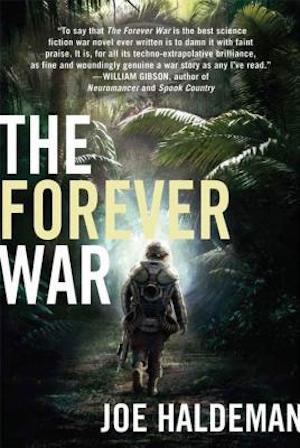
The Pitch: This novel is basically the anti-war response to Starship Troopers, written by a Vietnam war vet. Ridley Scott owned the rights to this novel and came very close to getting a greenlight several times, including one attempt that gave way to Prometheus. The novel uses the expanse of space to tell a vivid tale of endless war and the feeling of dislocation that most returning vets feel. A limited series might be in a better position to tell the story; we saw Ridley Scott do this with Raised by Wolves, so how about that? Be bold. Or how about releasing the first two hours with an exclusive theatrical window and ending on a trailer for the HBO Max series?
Don’t take my word for it: “Forever War on the big screen should be like All Quiet on the Western Front, but on other worlds, to show that humanity not only takes its best intentions to the stars, but also its greatest shortcoming: our failure to communicate with what we don’t understand.” —Tony Peak, author of Eden Descending.
Format and filmmakers: Film or limited series. Or both!
Faithful or not? My concern with a movie as opposed to a series is that a big budget affair would be too focused on the spectacle and not the emotional core.
City Come A-Walkin’ by John Shirley
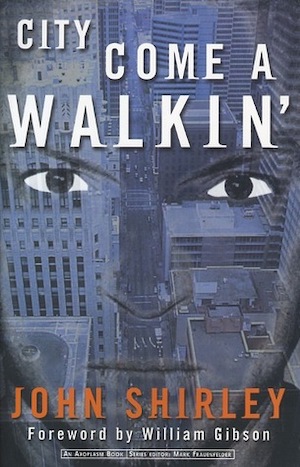
The Pitch: From the co-writer of The Crow comes a gritty novel that is part urban fantasy and part cyberpunk, written before the name of either genre was officially coined. This novel takes place in the slums of high-tech San Francisco, where the underground punk rock scene is run by hackers and gangsters. Stu Cole, the main character, is recruited by an online persona to fight these criminals, only to discover the avatar is the city itself, brought to life. (I know I am pushing it here by including a late ’70s novel, but it is great.)
Don’t take my word for it: “If John Shirley is “patient zero” when it comes to the cyberpunk genre (as William Gibson famously stated), then his titular character in City Come a-Walkin’, the very embodiment of all the glitz and technological shadiness of the city itself, comes to life like a renegade post-modern Prometheus.” —Shaun Lawton, editor of The Freezine of Fantasy and Science Fiction
Format and filmmakers: Imagine a punk rock Dark City, gritty neo-punk noir with a few action scenes; this is arthouse indie sci-fi destined to be a cult film. Think festivals and arthouse theaters—something on the scale of Benson and Moorehead’s Synchronic. Are they available after Moon Knight? Or how about giving it to Galder Gaztelu-Urrutia. He is the Spanish director behind 2019’s inventive and disturbing cult hit The Platform.
Faithful or not? Update the music and technology, but the structure and themes are solid.
Solar Lottery by Philip K. Dick
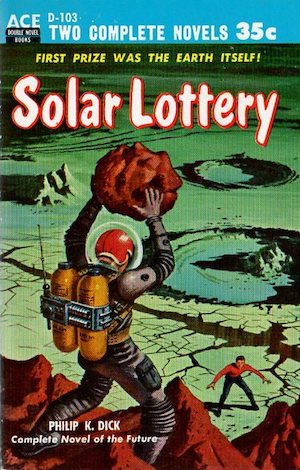
The Pitch: It has been too long since we had a truly bonkers Philip K. Dick adaption, so how about one we could pitch as The Running Man meets The American President? This was Dick’s debut novel and it’s the paranoid dystopian action thriller about our broken political system we need. In this future, the president is chosen at random by a lottery, and then once that choice is made, the candidate must prove their toughness by fending off assassins, as viewers watch all of this unfold on television. Normally this process is rigged, but not for Cartwright, our new President-elect, who quickly figures out the killers know how to get around his psychic bodyguards.
Don’t take my word for it: “Given how many film adaptations or homages of Dick’s work lean heavily into sci-fi action, it’s shocking that Solar Lottery hasn’t already been put to celluloid. Fast-paced, heavy on the weird, and intensely critical of our desire to be a passive audience to the misery of others, Solar Lottery is as relevant now as it was in 1955. And besides, we all want a movie that features a simulacrum controlled by multiple telepaths!” —Anthony Trevino, author of King Space Void and co-host of the Dickheads podcast.
Format and filmmakers: Movie! The next Total Recall! Directed by Gareth Evans of the Raid movies. Let’s see what he could do with science fiction.
Faithful or not? It needs some updating, as the novel is 70 years old, but the basic story is perfect.
The Secret of Sinharat by Leigh Brackett
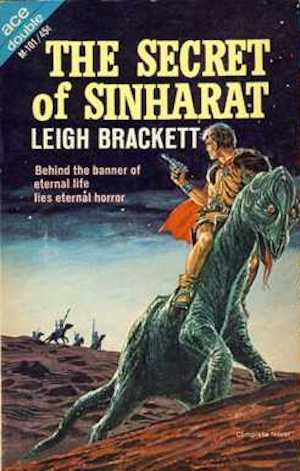
The Pitch: The Expanse and Firefly meet Flash Gordon, from the woman who worked on the screenplay for The Empire Strikes Back. Eric John Stark was born on Mercury in a time when dinosaurs roamed the earth; the solar system is populated by warring factions of space-faring Martians. Brackett’s high adventure novels were often called planetary romances, but they are pure, sugary-sweet space operas. The Secret of Sinharat could appeal to sci-fi fans looking for something Western-ish like Firefly, but with healthy doses of sword-wielding action. Dinosaurs, spaceships, and swordplay. Sign me up!
Don’t take my word for it: “A science fantasy set on the wild frontier of Mars, featuring Eric John Stark, science fiction’s original space rogue and the inspiration for later swashbuckling science fiction icons such as James T. Kirk and Han Solo. After spending some time with Stark, you’ll understand why author Leigh Brackett—known as “the Queen of the Pulps” in her day—was invited by George Lucas to write the original script for The Empire Strikes Back.” —Lisa Yasek, Regents Professor of Science Fiction Studies at Georgia Tech and editor of The Future is Female
Format and filmmakers: A TV Series for Syfy, or somewhere else that will let the creative team fly the campy flag high.
Faithful or not? I admit I read these books decades ago, and my recollection of them is a little faded, but the framework is there. My memory of them is pure pulp joy.
Cemetery World by Clifford Simak
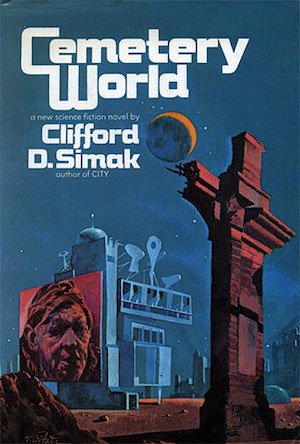
The Pitch: Dark and haunting science fiction that could be done on a reasonably inexpensive budget but filled with grand ideas. 10,000 years after the ancestral home of the human species was left lifeless, it has become the final resting place for the human diaspora’s rich and famous. That all might change when a group of colonists wants to take humanity’s home back. This novel was written by a man that received fan letters from the teenaged Isaac Asimov. Before The Batman got delayed by COVID, Matt Reeves was rumored to be adapting the Simak classic Way Station for Netflix—I am excited about that, but I would love to see Cemetery World.
Don’t take my word for it: “Mind-blowing as they are, with time travel, interstellar adventure, intelligent androids, mutant dogs and more, Clifford D. Simak’s stories are rooted in the rural Wisconsin of his youth, directly or by deep-space proxy, and wary of urban life. His galaxy-spanning yet folksy sensibility would be a particularly interesting perspective to revive in today’s genre conversation.” —Jayaprakash Satyamurthy, author of Strength of Water and Come Tomorrow
Format and filmmakers: Movie for Amazon or Netflix. Brad Anderson (Session 9) could direct—yeah, I know, he is a horror and thriller guy but I would love to see him tackle a gritty sci-fi movie.
Faithful or not? One of the reasons I would like to see this particular novel adapted is that the ideas were there, but it is not one of Simak’s best. It was written very late in his life. The themes and setting are near perfect, but the story and the characters could be improved in translating it to the screen.
Ringworld by Larry Niven
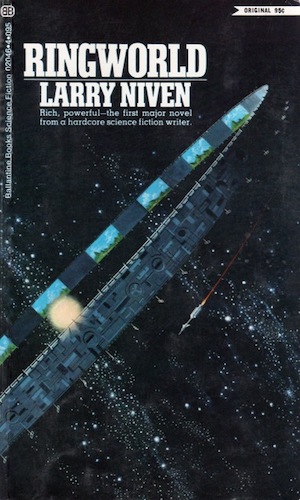
The Pitch: A massive structure is found in space—a massive artificial world shaped like a ring, which must have been built by a superior intelligence. In this imaginative science fiction classic, we follow the first human explorers to this vastly alien world. CGI would make this adaptation possible, and could deliver a mind-bending experience.
Don’t take my word for it: “A paradigm-shifting leap of imagination. Consider the mind that was able to conceive this mind-blowing feat of engineering, and then had the cojones and scientific knowledge to make readers believe such a thing possible. An instant classic.” —F. Paul Wilson the bestselling author of the Repairman Jack series.
Format and filmmakers: This should be a movie, and would require a visual stylist who would take the design very seriously. Joseph Kosinski, who made Oblivion and Tron: Legacy, would be a great choice.
Faithful or not? Despite winning the Hugo, Ringworld is socially outdated, with terrible and insulting depictions of the women, and the characters in general lack realistic motivations. Ringworld is a powerful concept with weakly executed characters, and one of the primary reasons to adapt it would be to fix that aspect. Destined for the list of rare movies better than the source material.
Babel-17 by Samuel R. Delany
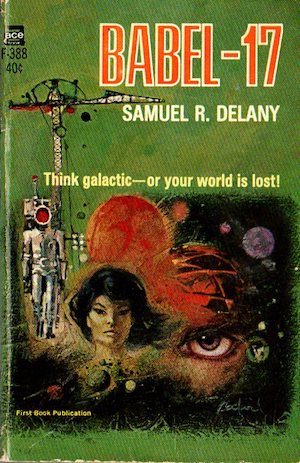
The Pitch: The simple pitch is: It’s the space opera version of Arrival. Babel-17 takes place in the middle of an interstellar war. Ryda Wong is a linguist, telepath, and starship captain sent on an important mission to locate a spy. The enemy has developed a new weapon, a language that spreads like a virus and changes your perceptions and motivations. Eventually, Ryda has to wonder if she herself is the spy after all…
Don’t take my word for it: “In a future where humanity finds itself enmeshed in an interstellar war, one starship captain sets out to stop the enemy from using a new linguistic superweapon called Babel-17 to turn people into unwilling traitors—only to realize that her exposure to it is leading her to betray her own crew. From award-winning science fiction luminary Samuel Delany, this story has it all—galaxy-spanning adventure, thought-provoking meditations on relations of language and reality, and a cast of unforgettable characters. It’s a breathtaking vision of a future that could be and a timely mirror of our own cultural moment, as social media increasingly enables bad actors to mobilize words as weapons in our own world.” —Lisa Yaszek, Regents Professor of Science Fiction Studies at Georgia Tech and editor of The Future is Female
Format and filmmakers: This short novel could be a great movie. You would need to find the right director who could play with the language and would be willing to slowly build the story—Duncan Jones, director of Moon and Mute, would be my choice for this one.
Faithful or not? I think any serious attempt at this movie would have to hire a serious linguist (or a team of them), not only to be involved in the writing of the script but to be on set the whole time to make things work.
Gateway by Fredrick Pohl
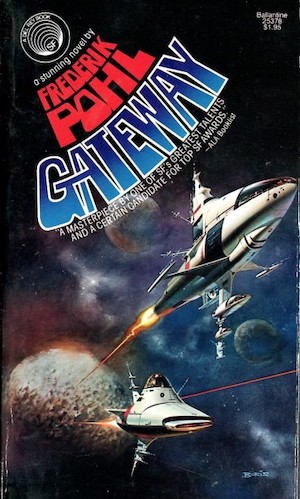
The Pitch: The story of a prospector who leaves an overpopulated and under-resourced earth to find alien ships left on an asteroid more than a million years ago. Once on the ships, they learn the ships are programmed to return to sender. Along the way, our protagonist goes on a journey of self-discovery, through the universe.
Don’t take my word for it: “Gateway has a wonderful science fiction setting to bring to life. The alien space station built into an asteroid, the Heechee artifacts being brought back by successful missions, the diverse population of desperate adventure/treasure seekers, and a fantastic AI character in Sigfrid von Shrink.” —Seth Heasley, host of the Take Me to Your Reader and Hugos There podcasts.
Format and filmmakers: Movie—and if I am dreaming, I would like to see David Fincher finally do his 2001-style opus: Why not Gateway?
Faithful or not? The main character is far from likable, and the first thing a screenwriter should do is give Robert a more redemptive arc. That said, this is a classic for a reason.
The Void Captain’s Tale by Norman Spinrad
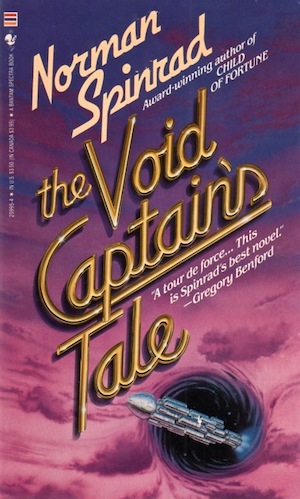
The Pitch: An anarchist free-love Dune written by one of the genre’s greatest provocateurs. In the second space-faring era of humanity, free from hierarchy and capitalism, space travelers seek art and experience. Everything depends on pilots, the rare human beings that reach propel ships faster than light travel through psychic connections and orgasms. Yep, you read that correctly. This adaptation would never happen, but I had to throw one oddball in at the end. (I do really like the novel.)
Don’t take my word for it: “Norman Spinrad is part of the pantheon with Harlan Ellison and Barry Malzberg, a writer who bugs the craw of science fiction and bursts out of its chest. Some genre readers never got over the provocations of The Iron Dream, but Spinrad’s exposure of the totalitarian currents of fantasy and SF was dead on.” —James Reich, author of The Song My Enemies Sing, and editor of Stalking Horse Press
Format and filmmakers: A movie by Lana Wachowski would be a glorious train wreck hated by the masses on release and destined to inspire think pieces about how everyone got it wrong a decade later.
Faithful or not? Yes and no; I think they should go further—let the pride flag fly, the roots are all there.
***
Of course, there are already some interesting projects based on Golden Age science fiction on the horizon at the moment—the second Dune movie has been greenlit while HBO’s Dune: The Sisterhood series is still in the works, and just a few weeks ago, a film adaptation of Philip K. Dick’s Vulcan’s Hammer was announced. Fans of post-New Wave (but still classic) SF can look forward to the film version of Octavia Butler’s Parable of the Sower, while FX/Hulu is producing a series based on her novel Kindred. Now is the perfect time for Hollywood or filmmakers from other countries to dive deeper into the genre and adapt some of these classics. So, readers tell me: What did I miss? Which Golden Age and New Wave books and series do you most want to see in theaters or TV screens everywhere? Let me know in the comments!
David Agranoff is a novelist, screenwriter and a Horror and Science Fiction critic. He is the Splatterpunk and Wonderland book award nominated author of 8 books including the cli-fi novel Ring of Fire, Punk Rock Ghost Story, and Goddamn Killing Machines which he describes as The Dirty Dozen meets PKD. As a critic he has written more than 1,100 book reviews on his blog Postcards from a Dying World which has recently become a podcast, featuring interviews with award-winning and bestselling authors such Stephen Graham Jones, Paul Tremblay, Alma Katsu and Josh Malerman. For the last three years David has co-hosted the Dickheads podcast, a deep-dive into the work of Philip K. Dick reviewing his novels in publication order as well as the history of Science Fiction. His novels are available on Amazon or Bookshop.org










